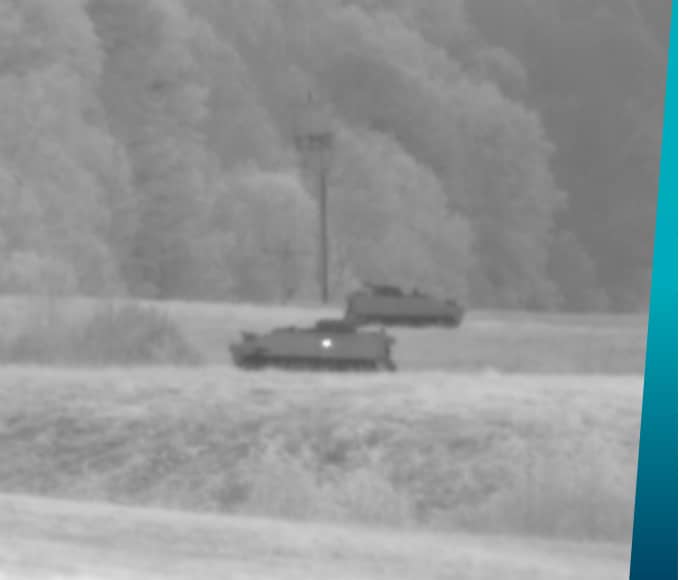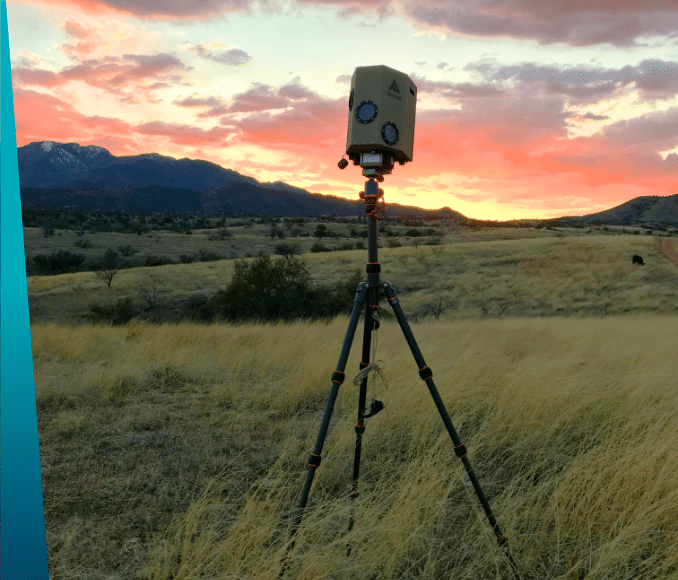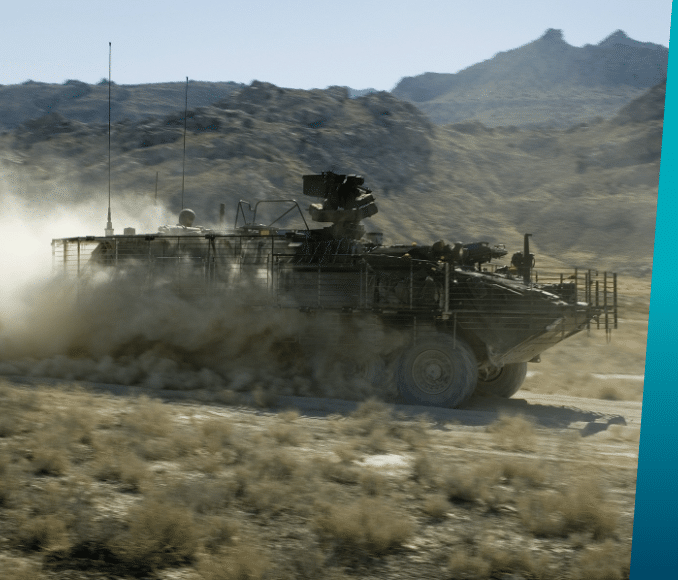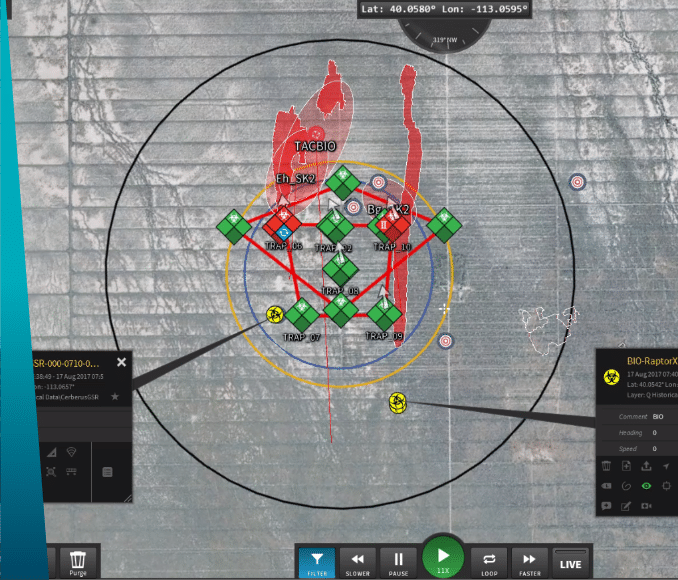Areté provides rapid, creative, end-to-end development capability to address challenging problems.
Areté has advanced force protection for land forces in multiple areas. Areté provides extremely discriminating chemical and biological detection, unmatched sensor fusion capability, early warning for small unmanned air systems, and battlefield auto-medicine. All these capabilities flow from superb sensing, analytics, processing and artificial intelligence. Major customers include the Joint Program Executive Office for Chemical and Biological Defense (JPEO-CBD), the U.S. Army, and the Defense Threat Reduction Agency.

AirTrac®
Challenge
Most laser designators use a lot of power, are heavy, and don’t perform well over a wide range of environmental conditions.
We discovered a way to exploit laser technology that established a new standard in size for lasers of this class.
We developed an athermal, lightweight laser for designators that can be used in handheld, drone, and aircraft configurations. Areté’s AIRTRAC-LP is a ruggedized, high-shock laser with >50 mJ pulse energy. AIRTRAC provides full NATO STANAG 3733 capability in a very compact, lightweight, and low-power configuration. AIRTRAC-LP provides high laser pulse energy over the full MILSPEC temperature range with low beam divergence, weighing less than a pound and with a range of 6 km.
We delivered units to several branches of the military, including the U.S. Army. The design allows for a variety of laser wavelengths, depending on where and how it will be used.

Allseen™
Deep Error Prediction
Challenge
Until now, automatic target recognition (ATR) has been difficult and inaccurate. If programmed to detect, for instance, trucks of a certain size, the incoming data simply couldn’t be relied upon. Military and commercial intelligence needed to be reliable.
We discovered a way to improve ATR algorithms that not only increases confidence in locating appropriate targets, but also gives an estimate of how accurate that detection may be.
We developed algorithms that are fast, retrainable, and scalable to different image sizes. Signal processing is almost fully real time and is much faster than obtaining a satellite image of the same location (which may or may not be a clear image), so ALLSEEN improves decision making and reduces the time to make decisions. ALLSEEN works in a fraction of the time of other ATR software and with greater accuracy. ALLSEEN can be mounted on a variety rotorcraft including drones.
We delivered ALLSEEN for a variety of military applications and are adapting it for disaster relief and other uses.

Basilisk™
Challenge
Drones and other small unmanned air systems present a significant security challenge. Most detectors and trackers use active radar, laser, or lidar signals, all of which can be spotted and intercepted. The military needed a passive detection and tracking system that eludes enemy recognition.
We discovered a way to introduce passive sensing with high accuracy to a product that’s portable (backpack) and offers 360° coverage with just two units.
We developed a low-SWaP, rugged sensor that’s tripod-mounted and powered by battery or solar panels in an austere environment. A single person can transport and set up Basilisk. Basilisk can detect and track several small UAS swarms in real time with an extremely low false alarm rate.
We delivered Basilisk prototypes in record time and competed in USSOCOM’s “Game of Drones”, where we were one of five finalists among 140 entries. We are continuing to produce reliable, low-cost prototypes for the government.

SILMARILS
Supercontinuum Infrared Lasers and Interferometer Multiband Analysis (SILIMA)
Challenge
The standoff detection of chemical contamination and vapors, including explosives, chemical agents, narcotics, and other signatures of interest existing technologies are not suitable for rapid aerial search and detection and identification of trace chemical compounds from distances greater than two meters.
We discovered a rigorous detection approach grounded in principled scientific method framework, high-fidelity physical modeling, and machine learning techniques.
We developed a series of prototypes in a compressed time frame, leveraging related work on Dengue Fever and Seizure forecasting. Areté worked with the sensor prime to develop a series of prototypes in a compressed timeframe.
We delivered, with the sensor prime, a high-confidence chemical detection system that operates reliably in real-world environments.

TANDOM™
Tactical Analytic Decision Optimization Module
Challenge
Detecting environmental, chemical, radiological and biological threats is a big part of today’s force protection. To detect and act on threats, leaders need an integrated, fused, real-time situational understanding to make rapid force protection decisions. Such a system reduces cognitive burden and simultaneously improves confidence in decision-making.
We discovered a way to fuse software and a wide variety and type of sensors in a way that enables them display appropriate alarms, and detect contaminants and accurately predict their paths. We made the system smart so that it learns about its particular local environment – rural, urban, U.S. or overseas.
We developed software and housed it in a mini-computer to fuse video, chemical, radiological and biological detectors as well as environmental sensors and satellite imagery if available. The sensors send their data to a hardened laptop that processes the data in real time, fusing information that used to require manual review and integration. TANDOM shortens decision-making time and increases confidence in the decisions. TANDOM is retrainable for new locations and use cases.
We delivered this solution to bases in South Korea and will continue to manufacture TANDOM for force protection in the United States and abroad. TANDOM supports fixed bases, expeditionary mission execution and warfighter-level monitoring.
AIMS
Automated Image-based Monitoring System
Challenge
Whether on the battlefield or for disaster relief, it’s a challenge to locate and assess casualties to determine whom to help and how.
We discovered a way to train multiple deep neural networks and combine that power with advanced signal processing that spots casualties and characterizes them for rough triage purposes to assist CASEVAC and MEDEVAC operations.
We developed real-time casualty detection, 3D human estimation, remote wound and vitals detection/monitoring, along with hybrid neural networks and signal processing for extremely weak signal measurement.
We delivered a low-SWaP aerial detection system using visible band imagery and video with a low false alarm rate, providing rapid triage in a modular, compact system that reached SBIR deployability and TRL 6 within two years.
